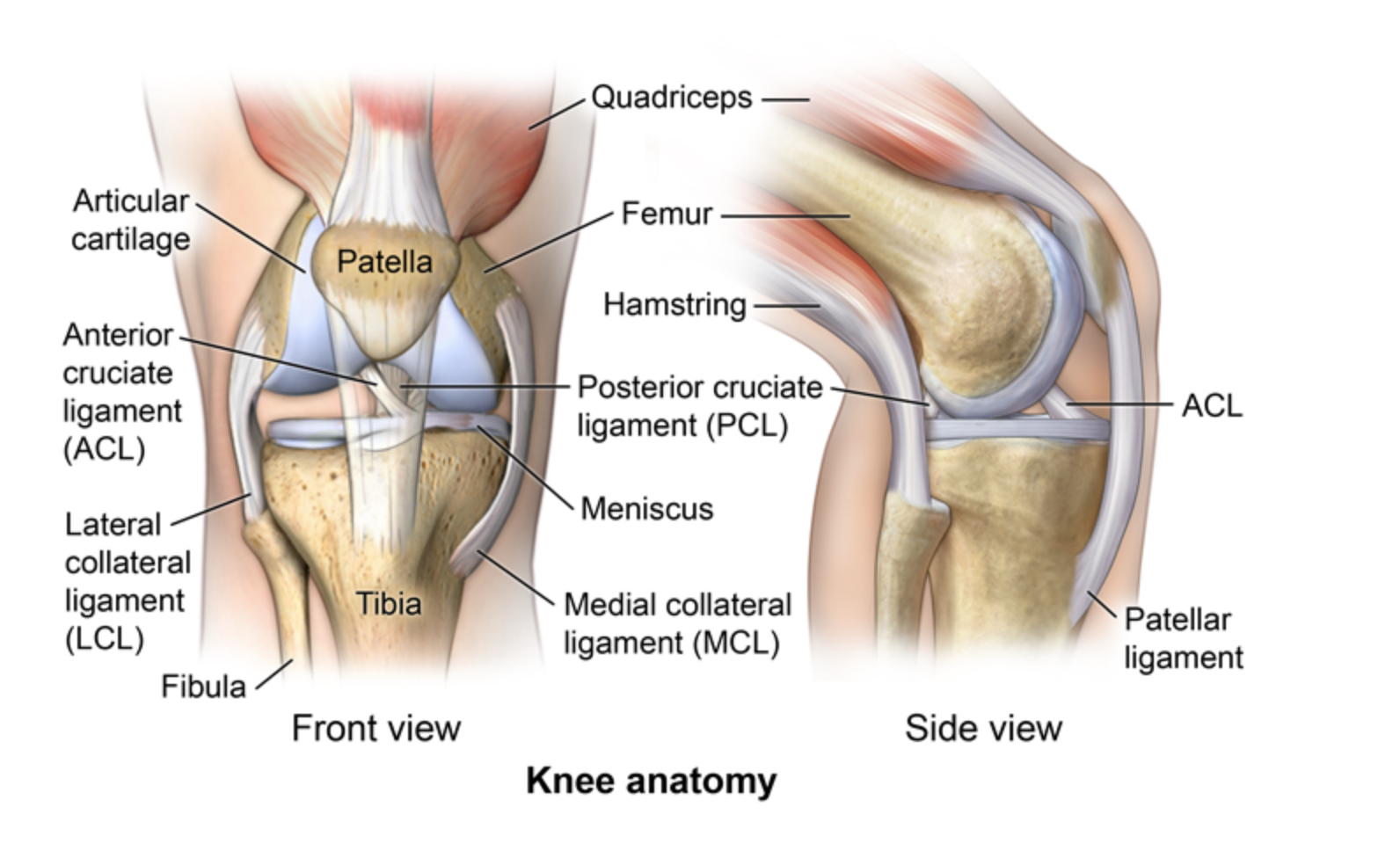Exercises to Relieve Knee Pain
Knee pain is one of the most common orthopedic conditions that physical therapists treat and a frequent cause of chronic pain. Knee pain can restrict movement, limit muscle control in the affected leg, and reduce the strength and function of the muscles that support the knee. Physical therapists can effectively treat and address all types of knee pain, easing pain and restoring movement and function. In today’s blog, Mangiarelli Rehabilitation physical therapist Bobby demonstrates physical therapy exercises to relieve osteoarthritis knee pain.
The Knee Joint & Knee Pain
The knee is the largest, hardest-working joint in the human body, making it more susceptible to injury. It functions as a hinge joint that connects the shinbone and thigh bone at the kneecap and is comprised of a complex structure of bone, cartilage, ligaments, and tendons. There are four major ligaments that support the knee joint: the ACL, PCL, MCL, and LCL.
The knee is also comprised of two rings of cartilage, the medial meniscus and the lateral meniscus, that attach to the shinbone and act as shock absorbers in the knee. The knee provides mobility and stability to the leg and bears multiples of your body weight when you run or jump.
Knee pain can restrict movement, limit muscle control in the affected leg, and reduce the strength and function of the muscles that support the knee. The health and function of the knee are closely correlated to the strength and the stability of the hip joint and the ankle. Knee pain can result from direct trauma to the knee during sports, recreation, a fall, or a car accident. Knee pain can also develop due to a sudden movement that tears the knee cartilage or ligaments (e.g. meniscus tear or an ACL tear), from repeated stress and overuse (e.g. patellofemoral pain syndrome), or from osteoarthritis, wearing away of the cartilage of the knee.
Osteoarthritic pain is a common cause of knee pain, particularly in those over the age of 50 who may experience morning knee stiffness (for less than 30 minutes), bony tenderness, or bony enlargement of their knees. Osteoarthritis is a degenerative joint disease that causes the cartilage around the knee to break down, often due to overuse, poor mechanics, or injury. Without sufficient cartilage, the bones begin to rub together, resulting in inflammation, swelling, and pain.
When an individual has osteoarthritic knee pain, they may assume that they should take it easy on their knee. However, it is essential to gently and safely exercise the arthritic knee to improve the function of the knee.
Physical Therapy for Knee Pain
Physical therapy can effectively treat and address all types of knee pain, reducing pain and restoring function through a customized therapeutic exercise program. The physical therapist initially conducts a thorough evaluation including assessing medical history, current condition, and a physical exam of the knee and other affected body parts such as the low back, hip, thigh, and ankle. The therapist performs a series of tests to assess range of motion limitations in the knee, muscle weakness and limited flexibility in the hip, knee, and ankle, and a review of knee performance when engaging in balance and coordination exercises.
Based on the assessment, the physical therapist creates a therapeutic exercise program to increase leg strength, improve balance, coordination, and agility, enhance kneecap tracking, and improve flexibility and mobility in the hip, knee, and ankle.
Research has shown that exercise therapy is one of the best ways to improve knee function and reduce pain over the long term. A 2020 systemic review stated that engaging in both hip and knee strengthening exercises reduces short-term and chronic knee pain and contributes to improving the functional capacity of the knee over the long term.
Physical therapy treatment for knee pain can include:
Pain-reducing modalities
Range-of-motion and stretching exercises of the knee, hip, foot, and ankle to reduce stress on the knee and decrease tension in tissues around these joints
Manual therapy hands-on techniques to gently restore proper movement in the muscles of the knee, hips, and ankle
Aquatic therapy exercises for greater ease of movement with less stress on the knee joint
Muscle-strengthening of the hip, knee, thigh, and ankle to address muscle weaknesses and imbalances that are contributing to pain. The quadriceps and hip adductors, lateral rotators, and extensors are specifically targeted for strengthening to relieve stress on the knee.
Bracing to stabilize the knee during initial recovery and use of a cane or walker to reduce pain and improve walking during recovery, especially post-surgery
Progression to complex work and sport-related functional training
Mangiarelli Rehabilitation physical therapist, Bobby, demonstrates several exercises you can perform to ease osteoarthritic knee pain. Bobby demonstrates a progression of exercises, focusing on enhancing quadricep strength using ankle weights, resistance bands, squats, and lunges.
